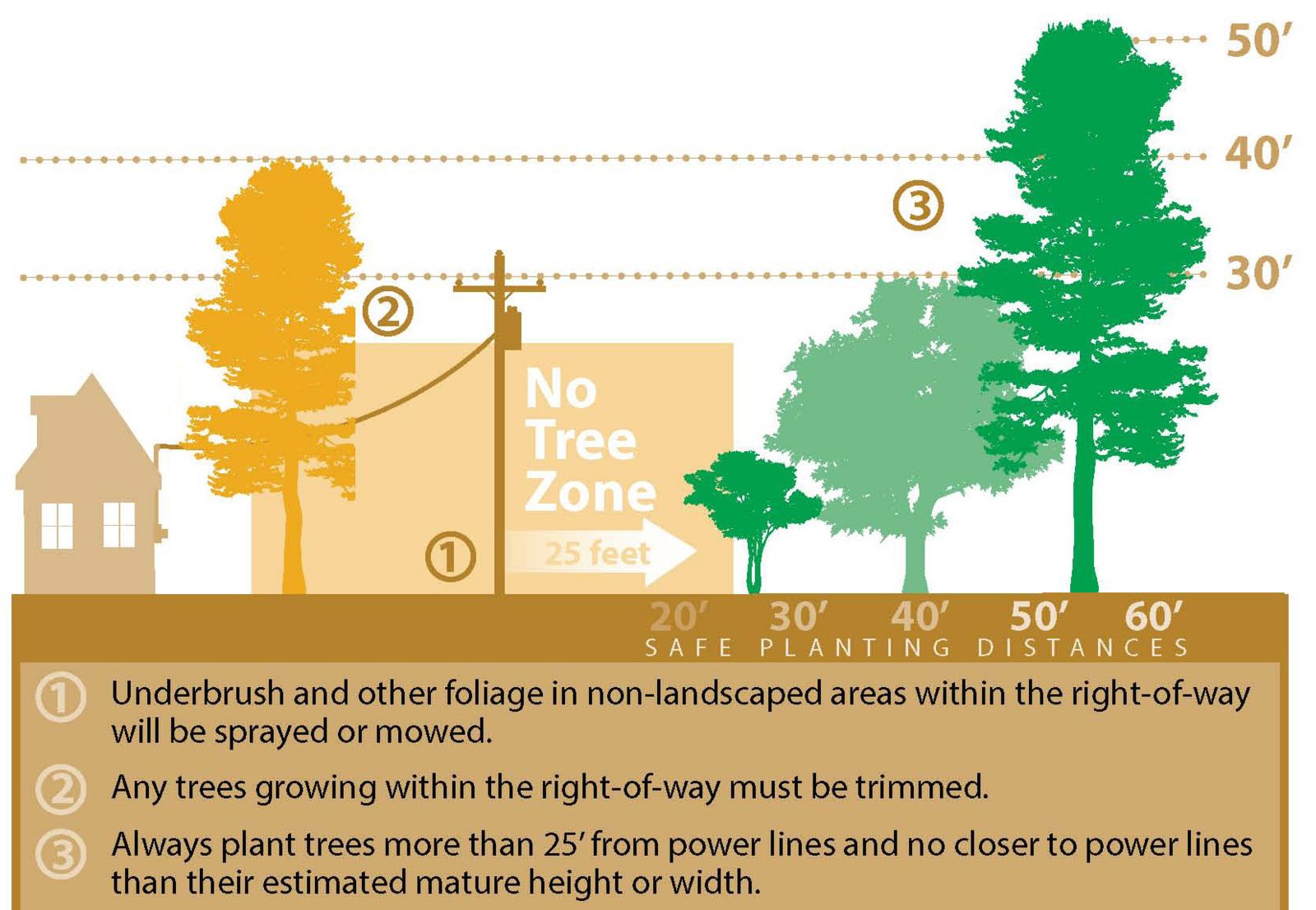News & Press
We all appreciate trees. They provide shade on warm days, help keep homes cool, add privacy and can even increase property value. Everyone also appreciates electric service. Unfortunately, trees and power lines do not mix. Trees growing into power lines can cause power outages and can be a safety concern.
How Often Do You Trim Vegetation?
Tri-County has a 30 foot right-of-way on high-voltage (primary) power lines. Asplundh, Tri-County EMC’s trimming contractor, trims trees around primary power lines every 5-7 years. Our goal is to reach every line on our system - about 2,100 miles - and then start again.
Is An Overgrown Right-of-Way Really Unsafe?
Accidents happen quickly. The weight of a child climbing on a tree limb that has grown into a power line can quickly cause it to become energized, posing a threat to the child. And adults can also be at risk when trying to do yard work in the trees that are close to a power line.
Does Clearing Right-Of-Way Increase Reliability?
Trees, or tree limbs, falling into power lines can knock out power to hundreds of members in a short amount of time. Trees can cause power lines to snap and can bring down power poles with their weight, causing lengthy power outages. While not all outages can be prevented, we can easily minimize damage and outage time by keeping right of way clear. In 2016, 44% of outages were caused by trees. By amping up right of way efforts, Tri-County will be able to reduce outages in the future.
Why Do You Trim Trees On My Property?
While most vegetation maintenance is performed along primary power lines, which typically run along major roadways, at times it is necessary to trim on a member’s property. We have an obligation to our members to keep the power on and provide a safe electric system. Tree limbs growing into power lines, or dead trees that could easily fall on lines, could cause power outages and fires.
Where Is It Safe To Plant Trees?
By planting bushes and trees at least 25 feet from the power line, you can help us hold costs down and increase your power reliability. As a guide, refer to the illustration below.
I Have Underground Service. Can I Landscape Around The Transformer In My Yard?
Just as our overhead lines need clearance, so do our underground transformers. Keep shrubs at least 10 feet from the sides and backs of our equipment; don’t plant anything directly in front. Doing so hampers our crews making outage repairs if they have to first trim shrubs to gain access to our equipment.

